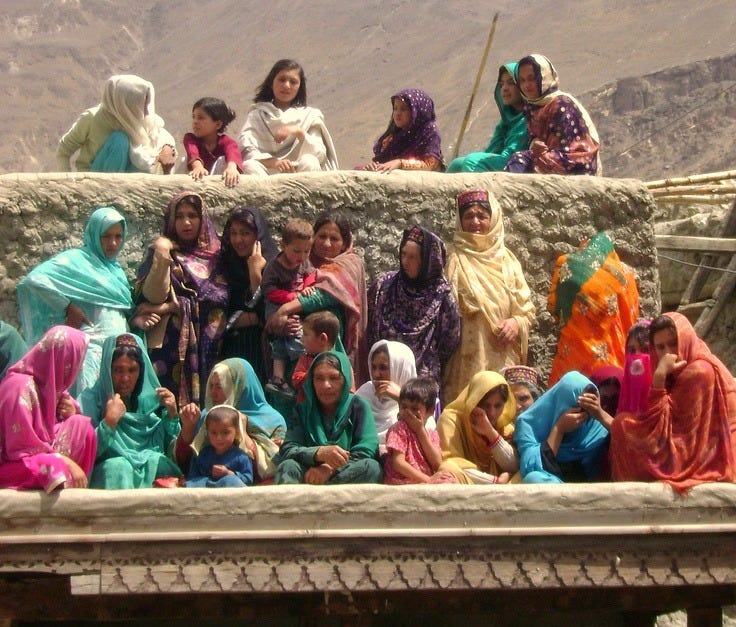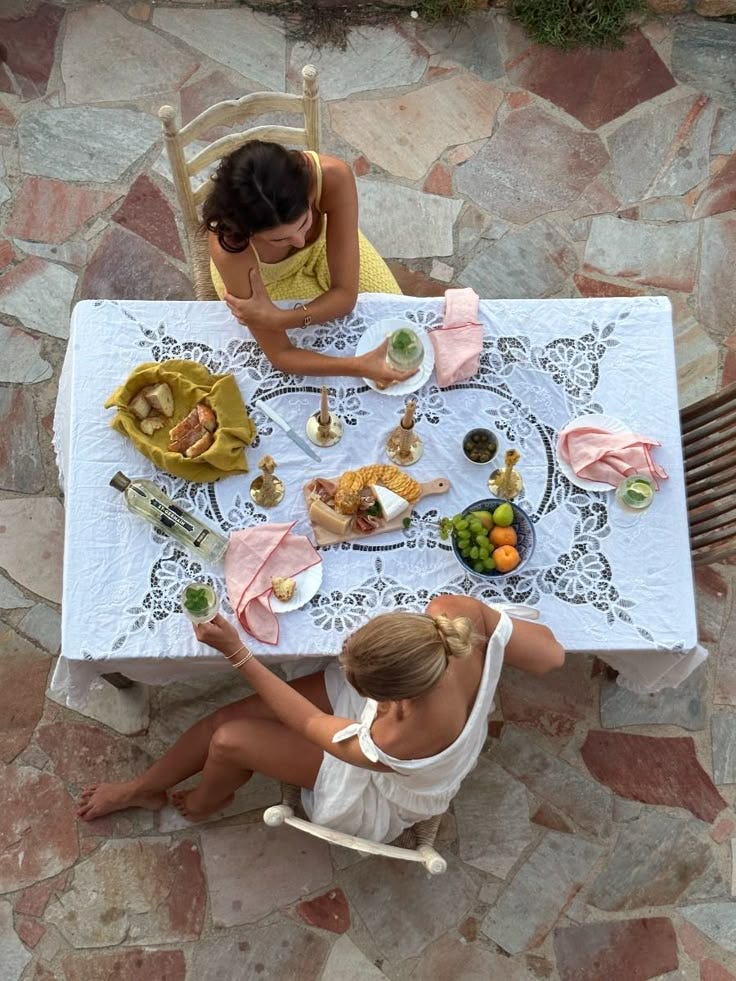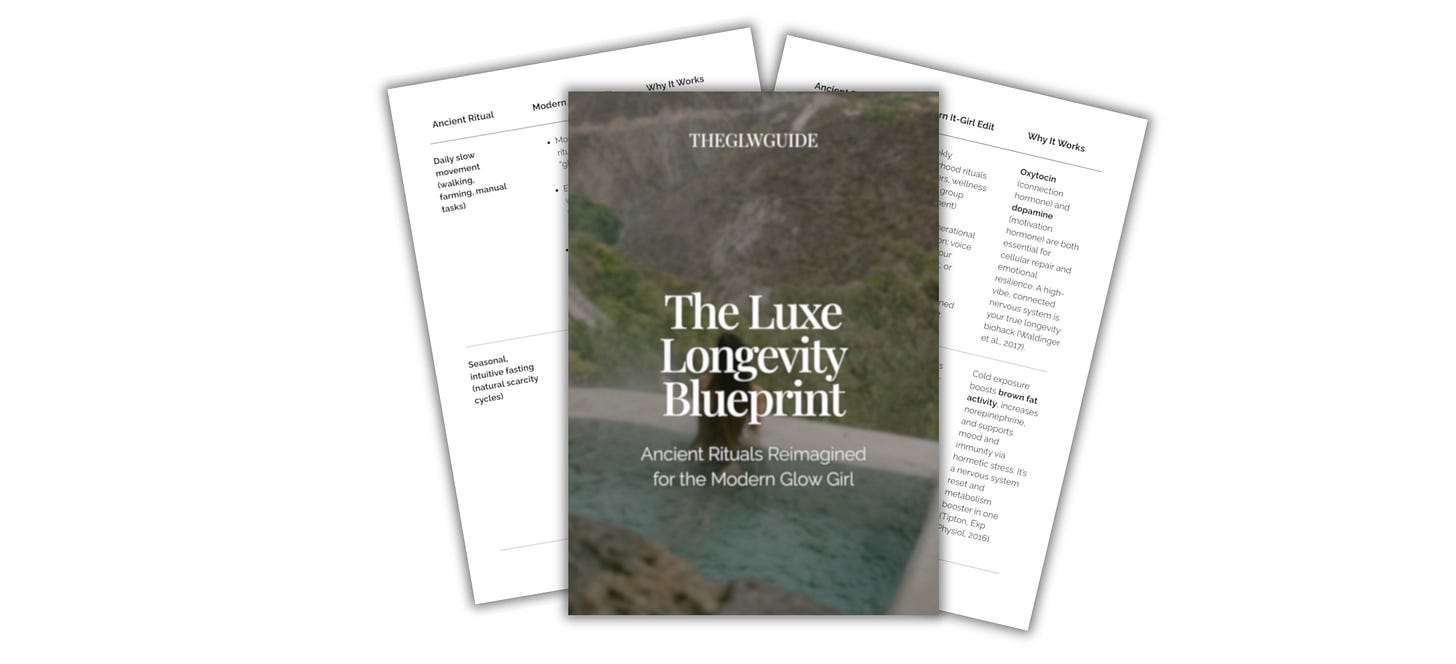A global glow guide to graceful longevity, ancestral resilience, and the timeless rituals of radiant women everywhere.
We’ve all heard of the Blue Zones. Sardinia, Okinawa, Ikaria—the usual suspects in the wellness world’s longevity lore. Leafy greens, evening strolls, and the occasional red wine-fueled dinner al fresco. But as the longevity conversation saturates Instagram feeds and wellness podcasts alike, the narrative remains curiously incomplete—especially when viewed through a modern, feminine lens.
Because longevity, for women, has never just been about living longer. It’s about how we live, why we live, and who we become as we age. It’s the unapologetic grandmother dancing barefoot in the Andes. The 83-year-old Sardinian matriarch with silver-streaked hair and a sharper wit than a 30-something executive. The Pakistani Hunza woman trekking mountain paths with skin that glows like it knows something we don’t.
This isn’t a column about the usual suspects. It’s an investigation into the other zones. A global journey through female-centered communities where aging is less about decline and more about deepening power, purpose, and glow. Backed by biology, lit by culture, and reimagined for the modern It-Girl seeking not just more years—but more radiant ones.
Not all longevity secrets come from blue zones—or Silicon Valley labs. Around the world, high-vibe, long-lived women are living proof that wellness isn’t always tracked, timed, or optimized. It’s embodied. Rooted in rhythm. And often, passed down quietly through ritual, not algorithms.
In a remote region of the Chinese Himalayas lies a matrilineal society known as the Mosuo—often dubbed “The Kingdom of Women.” Here, women make major decisions, run households, and raise generations in a structure that emphasizes community over codependence. Aging Mosuo women are not hidden or sidelined; they’re central, often revered for their wisdom and sensual vitality well into later life.
Their secret? Low stress, deep bonds, and a sense of emotional autonomy that would put modern attachment theory to shame.
Studies show that psychosocial stress is one of the greatest predictors of premature aging, inflammation, and mitochondrial dysfunction (Epel et al., PNAS, 2004). The Mosuo, who enjoy low rates of chronic disease and high reported wellbeing, embody what happens when a woman is both supported and sovereign.
Known as one of the longest-living populations globally, the Hunza people eat simply, move constantly, and live intimately with nature. But the true marvel lies in the women. Hunza women remain physically active well into their 80s, often without signs of frailty or chronic illness. Their glow is not metaphorical—it’s literal.
Their secret? Glacial mineral water, intermittent fasting (in the form of seasonal scarcity), and plant-centric nourishment—combined with a lifestyle that centers laughter, sunlight, and familial connection.
Their approach mirrors modern “longevity protocols” like time-restricted eating and micro-movement—yet Hunza women don’t track macros or wear Oura rings. They live by rhythm, not rigidity.
While Sardinia often headlines Blue Zone content, the story of its women is less told. Sardinian women live not just long lives—but deeply relational ones. They move constantly but informally, cook daily, laugh generously, and prioritize family above all else. Their routines are mundane yet sacred—walking uphill to garden, kneading dough, gossiping while hanging laundry under the sun.
Their secret? Daily purpose + informal, functional movement = metabolic magic.
Regular low-intensity movement throughout the day (as opposed to isolated workouts) is linked to improved glucose regulation, mitochondrial efficiency, and lower all-cause mortality (Matthews et al., The Lancet, 2016). Sardinian grandmothers have been doing this for centuries—without Pilates instructors.
From Finland to Iceland, the women of the north embody an understated, nature-forward longevity. They plunge into icy waters, embrace minimalist diets rich in omega-3s and wild herbs, and practice a cultural commitment to stillness—known in Sweden as lagom, or “just enough.”
Their secret? Deliberate discomfort (cold, quiet, fasting) layered over deep rest and groundedness. They are hormesis in cashmere.
Hormetic stress—short bursts of physical challenge like cold exposure—activates cellular repair mechanisms, boosts mitochondrial biogenesis, and increases brain-derived neurotrophic factor (BDNF), improving longevity and mood regulation (Ruan et al., Cell Metabolism, 2021).
While the Mosuo matriarch or Hunza grandmother may not be tracking ketones or practicing structured hormesis, their way of life triggers profound biological effects that modern science is only just beginning to understand—and wellness culture is now scrambling to emulate.
Let’s decode the cellular poetry behind these radiant women and explore why their glow doesn’t fade—it deepens.
At the cellular level, mitochondria are everything. These microscopic powerhouses generate ATP, the energy currency that fuels every single function in your body—from collagen synthesis to brain clarity. As we age, mitochondrial function naturally declines. But in women who live long and well, something different is happening.
What they’re doing (intentionally or not):
Moving consistently through low-intensity, high-frequency movement (gardening, walking, cooking, carrying).
Eating plant-forward diets rich in polyphenols, trace minerals, and healthy fats—think omega-3s, olive oil, and seasonal produce.
Keeping chronic stress low, which minimizes mitochondrial DNA damage and inflammation.
Scientific insight: Mitochondrial dysfunction is increasingly seen as a hallmark of aging (Lopez-Otín et al., Cell, 2013), and interventions like movement, antioxidant-rich diets, and stress modulation have been shown to enhance mitochondrial biogenesis and reduce cellular aging markers.
Modern longevity culture often turns to peptides and hyperbaric chambers. But these women? They walk uphill with baskets of produce, drink mineral-rich glacial water, and get sunlight on their skin before 10 a.m. It's mitochondria maintenance by way of lifestyle, not labs.
Hormesis is the science of strategic challenge—a concept our ancestors lived out daily. It’s the principle that small, intermittent stressors can actually strengthen the body, triggering repair, renewal, and resilience. Cold water. Fasting. Steep hikes. Seasonal food scarcity. These are not wellness trends. They’re ancestral truths.
What these long-lived women are doing:
Exposing their bodies to brief discomforts (cold river baths, mountain climates, food variety) that activate adaptive cellular responses.
Practicing natural intermittent fasting—not via apps, but through intuitive seasonal rhythms.
Alternating physical activity with deep rest and ritual stillness.
Scientific insight: Short-term stressors activate pathways like NRF2 and FOXO, which promote longevity, cellular cleanup (autophagy), and increased antioxidant defense (Martindale & Holbrook, Toxicol Lett., 2002). Cold exposure in particular boosts norepinephrine and brown fat activation, enhancing metabolism and mood.
We call it biohacking. They call it living with the seasons. Either way, the result is the same: tighter cellular function, cleaner detox pathways, and more radiant vitality—without the $700-a-month recovery membership.
Perhaps the most underestimated longevity factor isn’t found in a pill or protocol. It’s connection. These global longevity cultures aren’t just moving more or eating better—they’re loving harder, laughing longer, and living with deep relational purpose.
What these women embody:
Intergenerational households and close-knit communities where elders are central, not sidelined.
Daily emotional expression, storytelling, and social rituals—whether it’s Sardinian nonnas gossiping over espresso or Mosuo matriarchs guiding younger women through life transitions.
A sense of being needed—the neurological antidote to aging apathy.
Scientific insight: The Harvard Study of Adult Development—spanning over 80 years—found that close relationships are more predictive of long-term health and happiness than any other variable, including income or cholesterol levels (Waldinger & Schulz, Harvard Gazette, 2017). Chronic loneliness, on the other hand, is linked to increased mortality risk and inflammatory disease.
In other words: Your Sunday friend dates and voice notes might be more longevity-boosting than your spirulina smoothie.
In the West, aging is often framed as a crisis—something to battle with injectables, microneedles, or longevity tech stacks. It's the language of erasure: anti-aging, age-defying, wrinkle-repair. But among the long-lived women of the world’s most quietly radiant cultures, aging is not a pathology. It’s a power source.
There is no panic in their posture. No frantic grasp toward youth. Instead, there is grace: a lived-in elegance that reflects decades of emotional fluency, sensual rhythm, and social contribution. This is not about “letting yourself go.” It’s about growing more luminous with time, not despite it.
These women don’t disappear as they age—they deepen. Their style becomes more expressive. Their presence more magnetic. Their authority more revered. Where Western culture idolizes the freshly bloomed, they celebrate the richly seasoned. And that’s the philosophical pivot we need in modern wellness: from erasure to embodiment. From youth obsession to glow appreciation.
As age activist Ashton Applewhite writes, “Aging is not a problem to be fixed or a disease to be cured. It’s a natural, powerful process—if we let it be.”
Here’s what that looks like when reimagined through the It-Girl lens:
The real flex isn’t how much you can cut out—it’s how deeply you can bounce back.
Glow-aging women aren’t obsessing over what not to eat or how to maintain a thigh gap post-35. Instead, they’re optimizing resilience: metabolic flexibility, emotional adaptability, cognitive vitality. They’re less focused on perfect control, and more attuned to biointuitive recovery. Whether it’s the Sardinian grandmother who eats pasta with wine, or the Hunza elder who hikes daily into her 80s, longevity is a result of rhythmic nourishment—not constant deprivation.
The It-Girl evolution? It’s no longer “clean eating” or “always on.” It’s knowing when to pause, when to push, and when to let pleasure into the protocol.
In a culture obsessed with aesthetics, it’s easy to confuse beauty with youth. But true elegance—the kind that lights up a room, turns heads in silence, and commands deep respect—has almost nothing to do with age. It’s energy. It’s posture. It’s how you inhabit your body, not just how you dress it.
Glow-aging women move with intention, speak with discernment, and curate their surroundings like artists of ambiance. From the silky scarf tied effortlessly to the ritual of morning tea brewed in sunlight, elegance is ritualized into the everyday.
Modern translation? Let elegance become your personal operating system: how you speak to yourself, how you move through a room, how you prepare your skincare at night. Not performative, not expensive—just deeply embodied refinement.
The myth that your “best years” are in your twenties is not just outdated—it’s biologically incorrect. Cognitive empathy, emotional regulation, and creative clarity all increase with age (Carstensen et al., Nature, 2020). In many long-living communities, women report feeling most powerful and beautiful in their 40s, 50s, even 70s—not because they’re trying to be 25 again, but because they’ve finally grown into their glow.
Radiance, in this mindset, is something that compounds. Each year adds depth to your beauty. Each experience refines your expression. And each decade unlocks new layers of wisdom, sensuality, and presence.
The true glow-up? Realizing that becoming more yourself—more intuitive, more magnetic, more expansive—is the real fountain of youth.
To glow-age is to reclaim the timeline. To release the pressure of linear milestones and embrace cyclical evolution. It’s not about “looking young for your age”—it’s about radiating vitality at your age. The women who do this best don’t retreat from visibility. They radiate a kind of knowing beauty that’s rooted in experience, community, rhythm, and inner spaciousness.
They remind us that longevity isn’t just about adding years to your life. It’s about adding light—gracefully, unapologetically, and on your own terms.
The world's longest-living women aren’t biohacking — they’re embodying a refined rhythm of nourishment, movement, and connection that modern culture has largely forgotten. We’ve translated these ancient longevity rituals into a luxe, It-Girl-aligned cheat sheet that blends tradition with elegance.
Download the exclusive PDF guide:
“The Luxe Longevity Blueprint: Ancient Rituals Reimagined for the Modern Glow Girl”

























